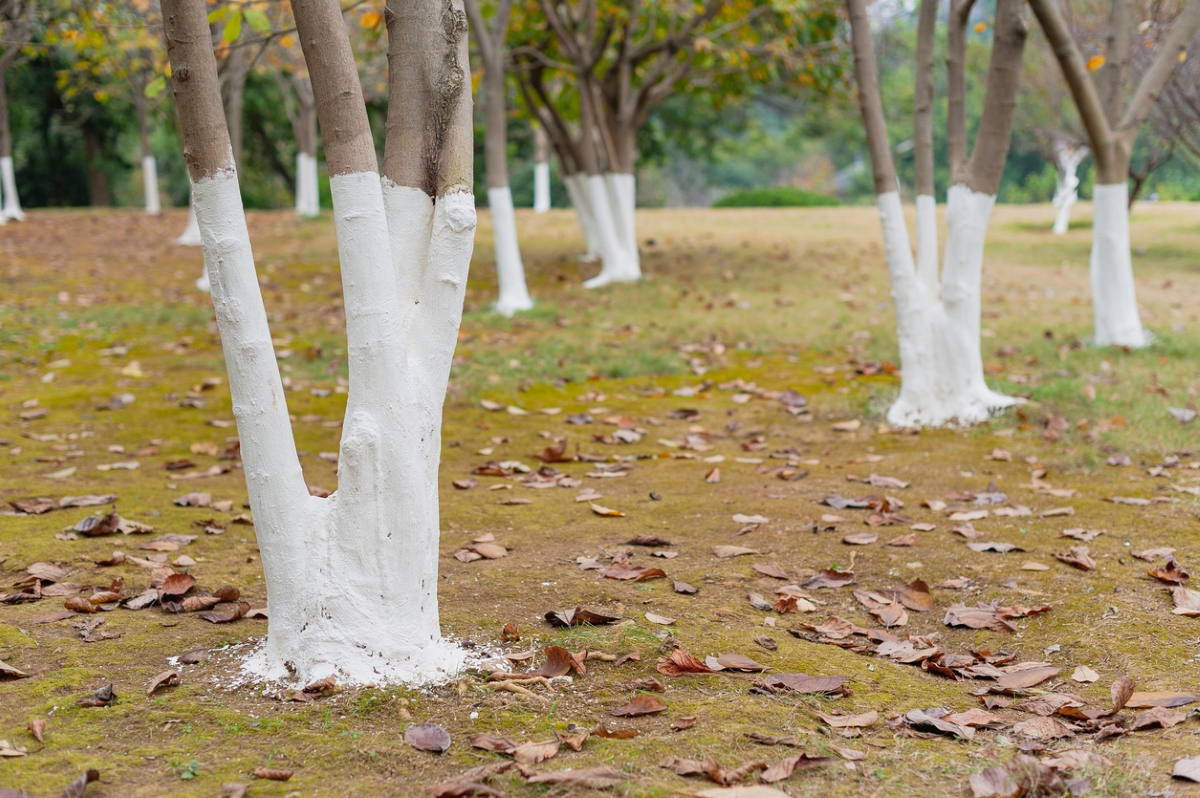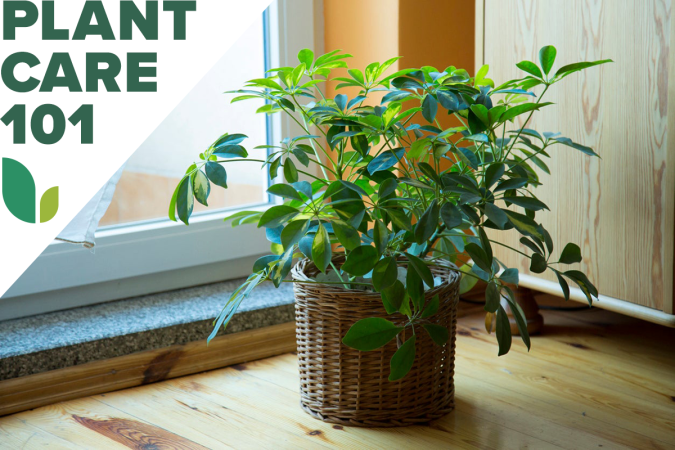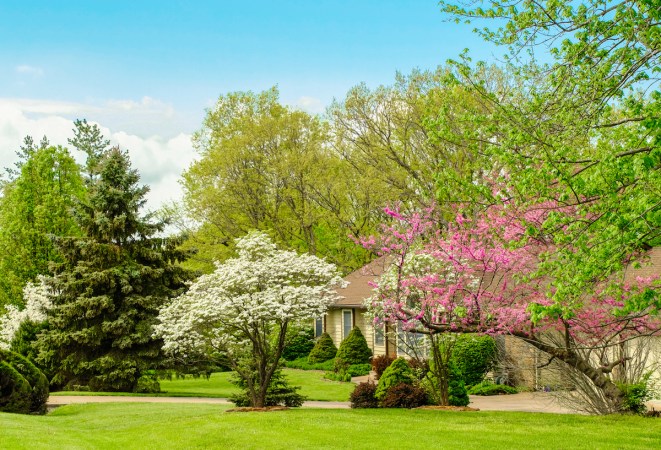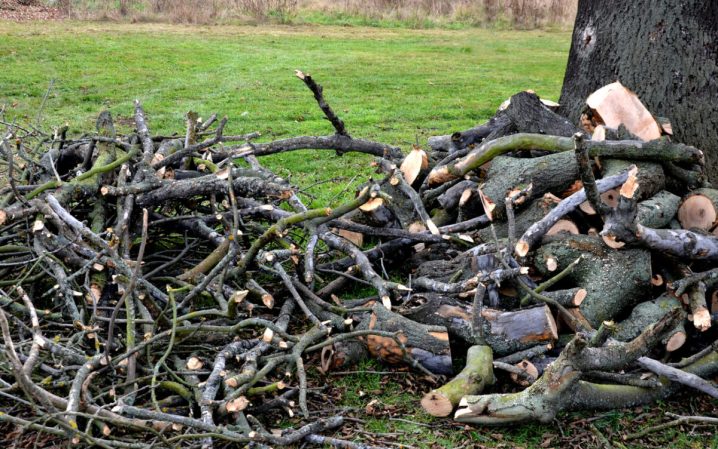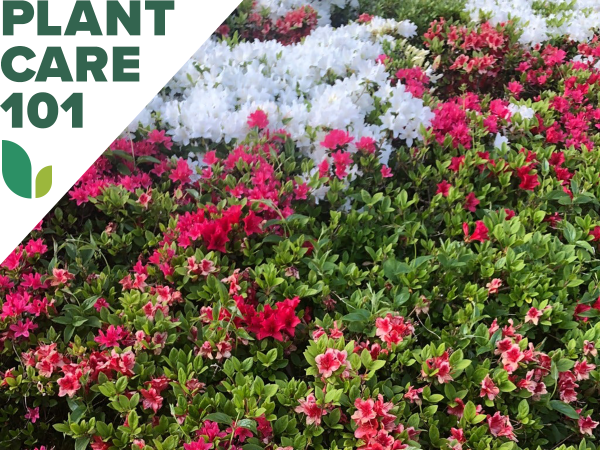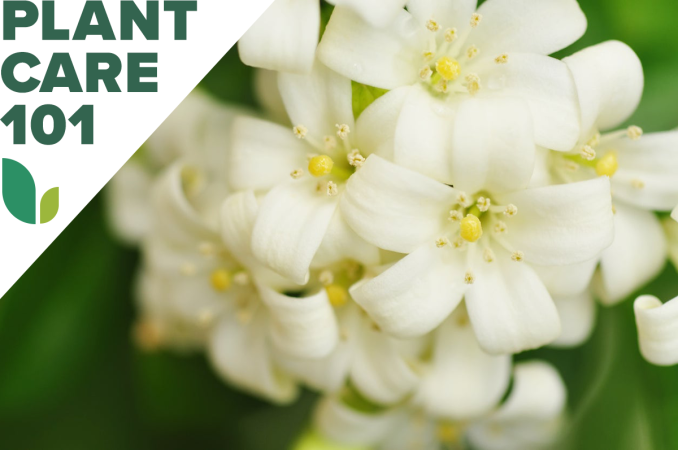We may earn revenue from the products available on this page and participate in affiliate programs. Learn More ›
Q: Driving home from work the other day, I noticed several trees on my street painted white. Why paint tree trunks white? What does white paint on trees mean?
A: While bright orange or red tree markings might mean a tree is destined for removal, white paint on trees means something entirely different. So, why paint trees white? Although the crisp, bright white may look pretty, the paint isn’t for aesthetics. Those tree trunks around town are covered in white paint to protect them from the elements. And that’s important, since trees are attractive parts of the landscape and offer shade for homes and outdoor living areas in summer.
Like plastic, paper, or aluminum tree guards, white paint on trees offers protection from the sun, harsh weather, and pests. Read on to learn more about why people paint the bottom of trees white, and why choosing the right paint is key.
RELATED: 12 Things an Arborist Wishes You Knew
Painting the bark on young trees helps to prevent sunscald.
Like people, plant life is vulnerable to damage from the sun. Deciduous trees, which shed their leaves at the end of the growing season, are particularly vulnerable to sunscald during the winter months. The branches devoid of leaves offer no protection from the hot rays of the sun. And in areas with very hot climates, trees may be prone to sunscald year-round.
The white paint on the trunks helps reflect sunlight and prevents the tree’s bark from getting too much sun. In the winter, an overabundance of sunlight can cause thawing of critical tissues under the bark. They then can refreeze when temperatures drop, leading to trunk cracks and fissures. These wounds are perfect entry points for pests and diseases.
Thick latex paint can help protect trees from the elements.
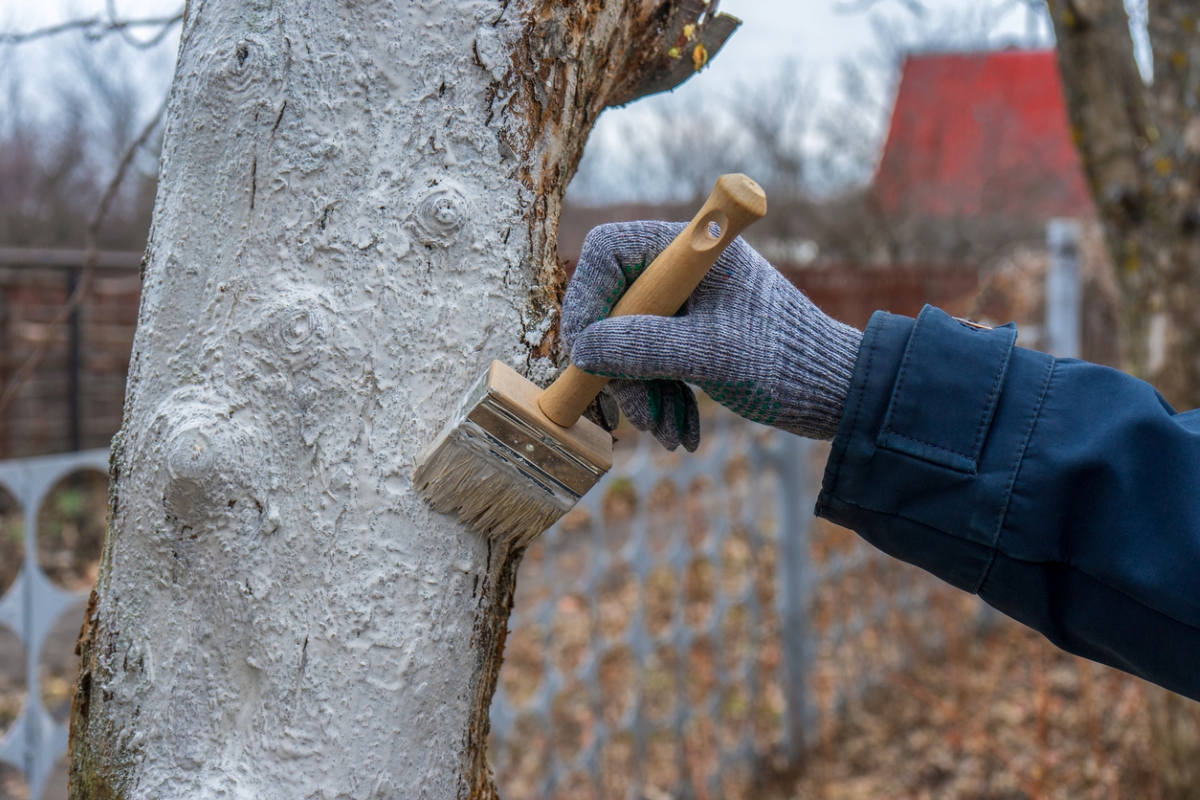
Damage from sudden thaws and freezes can leave trees, especially those bearing fruit, in a vulnerable state. In cases of severe injury, the damage can be fatal. Applying heavy latex paint (or a specially designed formula such as this highly rated option available at Amazon) to a tree trunk can help protect trees from harsh winter weather.
The University of Tennessee Agricultural Extension Service recommends using interior-grade latex paint to whitewash tree trunks and avoiding toxic oil-based paints. It’s also best to use tree trunk painting only on trees older than 2 years. For younger trees, opt for plastic or aluminum guards instead of paint.
The ideal time for painting bark on trees is at the tail end of fall on a sunny day to allow enough time for proper drying. Before applying the paint, dilute it with an equal amount of water. If the first coat appears to be too thin, add a second coat. You can apply the paint using brushes, sponges, or cloth rags. You also can spray paint a tree white, but likely will need to give it two coats.
RELATED: 10 Signs a Tree in Your Yard Needs to Be Removed
Tree trunk painting also deters pest infestations.
Painting a tree trunk with white paint prevents pests from gaining access through various small openings. Protecting trees from sunscald using white paint also prevents these cracks from forming in the first place.
When painting a tree trunk white, make sure to paint up to at least 18 inches above the ground. You can even paint up to the point where the first major branches join the trunk for additional protection. When painting, it is essential to cover the trunk thoroughly. Any bare spots might represent access points for hungry pests.
Latex paint is ideal because it won’t crack as it expands, which might again leave your tree vulnerable to pest infestations. To provide continual protection, reapply whitewash annually.
